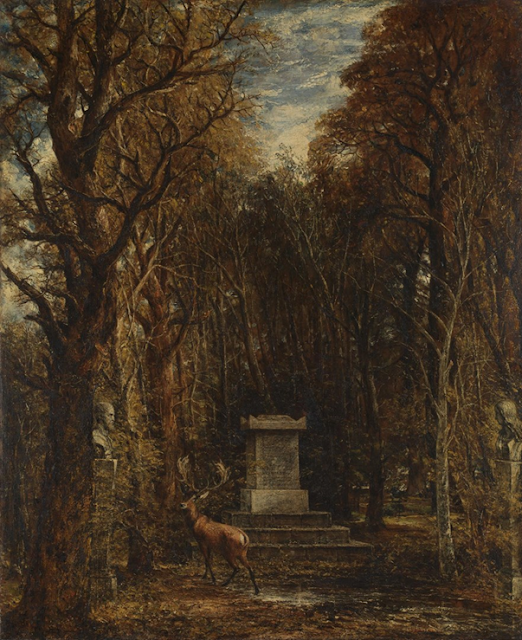John Constable: Cenotaph to the Memory of Sir Joshua Reynolds

John Constable: Cenotaph to the Memory of Sir Joshua Reynolds, erected in the grounds of Coleorton Hall, Leicestershire, by the late Sir George Beaumont , 1833-6, National Gallery, London Sir George Beaumont (1753-1827) was a well-known art collector and amateur painter. He had been a friend of Sir Joshua Reynolds (1723-92), who had died twenty years earlier, and Beaumont now honoured this friendship by erecting a stone cenotaph to Reynolds’ memory in the grounds of his estate, in the year 1812. The memorial was inscribed with verses dedicated to Reynolds, by William Wordsworth, and placed at the end of an avenue of lime trees. On either side of this avenue were placed busts of Michelangelo and Raphael, two of Reynolds’ artistic heroes. John Constable (1776-1837) the landscape painter was another of Beaumont’s friends and sometimes came to stay with him. In 1823 Constable made a pencil sketch of the memorial to Reynolds. Beaumont died in 1827, and in 1833 Constable be...


